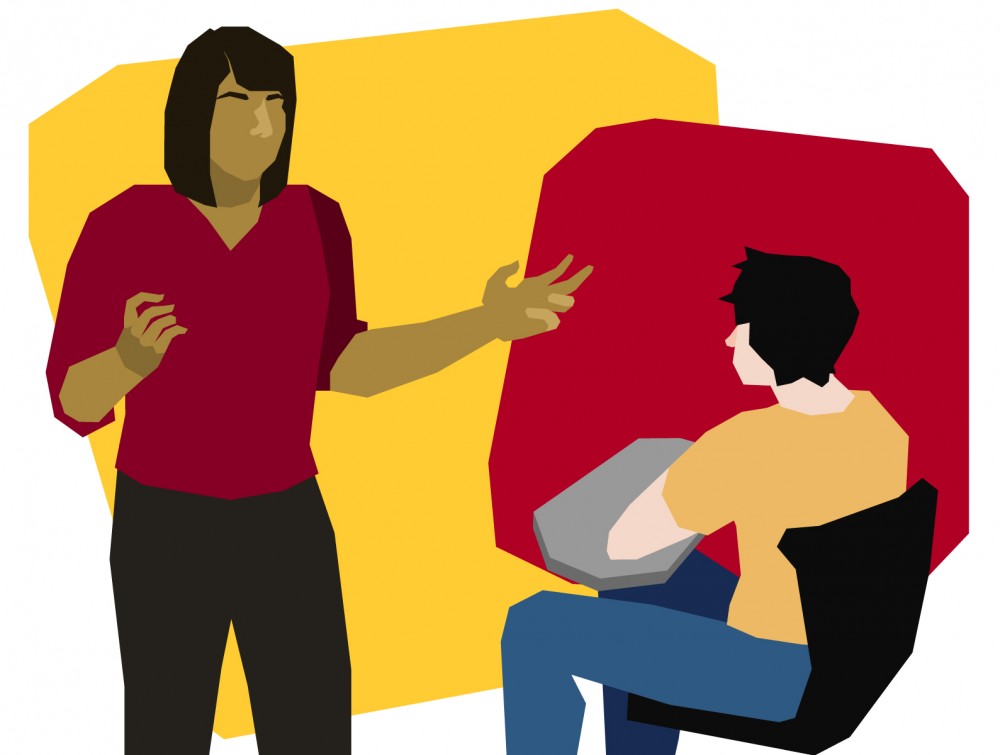The College of Liberal Arts is piloting five projects this fall that aim to improve the college’s relationships with nearby communities.
The projects are part of the college’s Liberal Arts Engagement Hub initiative, which provides them with funding and space. The hub is meant to help improve CLA’s engagement with surrounding communities, and is currently located in Nolte Center, but will eventually move into Pillsbury Hall after it is renovated.
Amelious Whyte, the director of public engagement for CLA, said the hub is part of the college’s Roadmap strategic plan, which was established in 2014 and seeks to deepen connections with communities.
“The idea behind [the hub] was to create a physical space where we could bring together liberal arts faculty, staff, students, as well as community members to work on publicly engaged projects, particularly those that are addressing pressing issues,” Whyte said.
Instead of presenting communities with a result and asking their opinion of it, the hub is an attempt to bring community ideas into the making of projects. Whyte said they hope the hub will make CLA more appealing to outside collaborators.
“The transformational goal is the idea that over a period of time, the way that the College of Liberal Arts does public engagement may look different than it does now,” Whyte said.
Bridges of Memory
Bridges of Memory, a project run by the Center for Holocaust and Genocidal Studies, launched on Oct. 2 by showcasing an exhibit depicting descendants of Armenian Genocide survivors along with their family mementos.
“It’s an object of memory, a treasure of memory and also of hope in the sense that it not only remembers the atrocious past, it’s also a sign of perseverance and survival,” said Alejandro Baer, a University associate professor of sociology and director of the CHGS.
Bridges of Memory aims to work with Armenian, Hmong, Jewish, Khmer and Somali communities, among others, to address their historical experiences with mass violence and survival.
“When we think of genocide and mass violence, the generations who survived, we honor those who passed and at the same time we honor the survival of the community,” Baer said.
Ecosong.Net
Ecosong.Net is another project that aims to connect different communities with University faculty and students. However, the project plans to create what are called “song gardens” around Minneapolis.
“Focusing on community rain gardens designed to conserve and clean our public waters, each ‘Song Garden’ will feature a small plaque with a QR code that take the visitor/listener to that garden’s song,” wrote director Mark Pedelty in an email to the Minnesota Daily. “Each song will be composed and performed by a community musician and ensemble with a strong connection to the local community in which the garden lives.”
Pedelty said they hope to plant a song garden on campus as well.
Interruption, Innovation, and Inclusion
Interruption, Innovation, and Inclusion is a project that hopes to reduce inequality by studying educational systems in other countries, especially Finland.
A task force of educators and community leaders organized by the Institute for Global Studies will travel to Finland next spring to discuss ways to change how students receive education.
“There’s a lot of barriers that we all face when we try and implement change, and some of those barriers are policy or the way things are set up already,” said Deborah Jane, an IGS outreach coordinator. “But I’m hoping that this program will provide ways into change in some degree for each participant.”
The Midway Peace Park
The Midway Peace Park Hub residency is an extension of a project that was under development at Gordon Parks High School in St. Paul. For the last 10 years, members of the project have advocated for a park to be built behind the high school as a way to create more green space. The park is currently being built.
Members of the project developed a film advocating for the park as a way to connect with students, faculty and community members. As the project moves into the CLA hub, they want to demystify community engagement, said Paul Creager, the curriculum coordinator at Gordon Parks High School.
“You have to instead translate local community topics into state standards into teaching,” Creager said. “The work of a teacher is improving communities … [Students] should be connecting their learning with local civic engagement.”
Where We’re From and Where We’re Going
The project Where We’re From and Where We’re Going aims to reduce the educational opportunity gap for students of different genders, races and ethnicities.
“The educational opportunities for African American students, for Native American students, for Chicano and Latino students, Asian American students is lagging way … behind,” said Katherine Hayes, the director of the Race, Indigeneity, Gender & Sexuality Studies Initiative.
Hayes said her goal is to complete a grant proposal to support the project’s efforts in the spring, and facilitate interactions between the University and Twin Cities students and their parents about how to decrease the educational opportunities gap.
“If these are kids who aren’t even getting the opportunities that would bring them to our campus in the first place, then we have to actually work with the schools to make sure that they have those opportunities so that they can get to our campus,” Hayes said.







